Clear-cutting is Clear-cutting, No Matter Where the Trees are From
A rant against dogma and eradication
As regular readers know, critiquing the “invasive plant” narrative is one of my main themes here. The name of the Substack is, after all, “Speaking for the Trees, No Matter Where They’re From.” Usually I choose to approach the topic in of two ways: 1) scientifically, drawing on the peer-reviewed literature, often from the field of invasion biology itself, to bust popular myths, and 2) culturally, pointing out how the current and historic prejudices of our society shape our worldview, saddling us with mistaken impressions about how nature really works and how we should be relating to it. This is basically how I talk about “green” energy too.
I use those two approaches because I hope they might be effective at reaching people, and not because they’re the whole story for me personally. For me personally, emotions also play a part. Namely love; love for plants particularly and for all life on the planet more broadly. And rage; rage at those humans who kill things needlessly.
So no matter how I choose to communicate about these issues, love and rage are what motivate me, and they are intertwined. In the early 2000s, when I was involved in the forest defense movement in the Pacific Northwest, I was inspired by my love for the breathtakingly beautiful old growth trees I met, and by my rage for those who cut them down. Likewise, my opposition to lithium mining in the Great Basin (at Thacker Pass and elsewhere) is driven by my love for the Sage Brush Sea, and all its flora and fauna, and by my rage at the people and the industries that want to tear it up. Anywhere I go at any time, I feel love for the plants I see, regardless of their origins, and I feel rage for people who treat them like inanimate objects or like enemies to slay.
So when I focus on the science and the culture, I’m being diplomatic. More diplomatic than I want to be all the time, I will admit. Perhaps someday I will grow weary of this soft pedaling and take more direct action in defense of mother earth. We’ll see.
The rage
I’m bringing this all up because I recently experienced the rage.
Nikki Hill and I went for a walk along the Uncompahgre River near Montrose, Colorado. She was looking to collect some Willow wands for basket-making. It was a lovely, warm afternoon. We delightedly found lots of Beaver sign, namely gnawed branches and a few stumps. The river’s flow is too strong for the dam there, but they live in lodges they build along the banks and we think we identified one.
We crossed the river on a pedestrian bridge and soon after found a terrible scene. For at least a couple hundred feet along the shore, almost every single tree had been cut down. Like over 95% of them. The bank, which had formerly been shaded along there, was now exposed to the sun. Stumps were everywhere. Dead branches and trunks were piled up in some places, but had been hauled away in others. When living, the trees had been habitat for birds, mammals, and insects, and had provided shelter for younger plants. They had also helped hold moisture in the land beside the river, as all vegetation does.
In short, an ecosystem had been razed.
Why?
Because the trees were Tamarisk, aka Saltcedar (genus Tamarix), which some people consider “invasive.”
When it comes to calling plants “invasive,” you have two kinds of people: the true-believers and the repeaters. The repeaters are just using language they’ve heard from the media or other people. They don’t really have strong feelings about it, and if you talk to them about how nuanced the topic actually is, they’ll almost always soften their tone. Most people don’t actually want to hate things and they’re relieved to have an excuse to let it go. Nikki and I have both had many experiences like this with people. It can take as little as five minutes.
Not so with the true-believers. They’re dedicated to their dogma, and they’re not actually interested in the science, even though that’s the pose they might strike. If they were interested, they’d be reading the literature, and if they were reading the literature, they’d see that the field of invasion biology is “distinguished more by debate and controversy than consensus,” as put by biologist Mark Davis, author of the textbook Invasion Biology. The true-believers are the standard bearers leading the charge into battle in their misbegotten war on natural processes. They’re the ones too often justifying herbicides and bulldozers.
On a good day, I find the true believers annoying. On a bad day, like this one by the Uncompahgre, when I’m witnessing the destruction that their philosophy has wrought, I hate them. It passes of course, because emotional intensity of that kind can’t last, but in the moment, I truly detest them. I wonder then why I bother to be diplomatic about these subjects at all, because they’re not budging. They’re not interested in a discussion. They’re not curious, as I am, about the world and how it works. They are not starting, as I am, from questions; they have the answers already. They don’t reject the idea, as I do, that the world is reducible to dichotomies.
Admittedly, I usually I just avoid engaging with them altogether. My time is better spent speaking to people that are curious and open. In so doing, I keep my own mind open and my own curiosity active. Which is just how I want to live my life overall anyway.
The science
Nikki wrote a whole piece about the myths around Tamarisk: “Shooting the messengers: How plants are unfairly blamed for wasteful human water practices in the U.S. West.” I recommend you read it, but here’s the tldr, along with some points she’s made elsewhere in unpublished writing:
WATER MYTH: Tamarisk has a reputation as being a heavier user of water than native trees in the Southwest, but this is false. In the late 1930s, the Phelps Dodge Mining Corporation needed more water to expand their copper mine in Arizona, but all the neighboring water rights were claimed. Because copper was needed for the war, the Feds were willing to help, so the US Geological Survey was sent out and they alleged that Tamarisk sucked up x amount of water, which Phelps Dodge could then use if they cut down the trees. The same tactic had been used previously to justify taking out native Cottonwoods on the Gila River nearby. If Tamarisk was a heavier user of water, there was that much more for the copper mine, so the USGS dutifully found it. Research in the ‘90s using sensitive equipment for measuring climate factors found that Tamarisk does not use more water than native Cottonwoods or Willows, but the myth stuck, and people still repeat it.
COMPETITION MYTH: Tamarisk (and Russian Olive) are often accused of “outcompeting,” “pushing out” or crowding out” native Cottonwoods and Willows, but this is false. What’s actually happening is that the conditions along the rivers that are their habitat have been severely altered by dams. Cottonwoods and Willows both produce short-lived seeds in the spring, timed with seasonal flooding from snow melt. The seeds are carried along and deposited on sandy or gravelly banks by the higher water. Unlike many other seeds, Cottonwoods and Willows don’t have an endosperm, which means they have no stored energy, and are very short-lived. Instead they are able to photosynthesize! So when they’re placed in an appropriate spot they can germinate within 24 hours. All of this is to say that Cottonwoods and Willows are flood-dependent for reproduction, and dams interrupt this cycle. No more seasonal floods in the spring = much much lower seed germination. Tamarisk and Russian Olive have seeds that don’t require these conditions and can thrive without them. So the decline of Cottonwoods and Willows and the success of Tamarisk and Russian Olive are due to us humans.
SALTY SOILS MYTH: In a classic case of confusing correlation and causation, Tamarisk has falsely been accused of making the soil more salty. In actuality, the soils along the rivers in the West, especially the Colorado River Basin (of which the Uncompahgre is a tributary) are becoming saltier due to irrigation practices. When fields are irrigated, the water percolates through the soil and rejoins the water table of the rivers, bringing “salts” along with it. So the further you go downstream along the Colorado River, the saltier it gets. Farmers in California have to filter it to make it less salty. The problem is compounded by the lack of spring floods, which would help lower the concentration of collected salts. Tamarisk and Russian Olive are much more tolerant of salty soils than Cottonwood and Willow. Again, we changed the conditions to favor species that happen to be introduced and disadvantage species that happen to be native. This is on us.
BAD NEIGHBOR MYTH: It’s claimed that Tamarisk doesn’t serve native species but this is false The endangered Southwestern Willow Flycatcher (Empidonax traillii extimus) numbers under 500 breeding pairs and their main threat is habitat loss. The decline of Cottonwood and Willow (some by being cut down) is bad for them, but they have been switching over to the Tamarisk. In some areas, 75% of the birds found are nesting in Saltcedar. There is also no evidence that the Flycatcher is any less provided for using Saltcedar In Arizona, 49 different other bird species also nest in Tamarisk. Nature is adaptable. At this point, removing all the Tamarisk would harm these birds. Fortunately, the birders have been standing up to the “invasive” true-believers in some places, stopping their heedless eradication.
AND WHERE DID NIKKI AND I SEE THESE CLEAR-CUT TAMARISKS? Downstream from a big dam.
THIS IS ECOLOGICAL DAMAGE NOT RESTORATION: If the goal here was to restore the Cottonwoods and Willows because they’re native species, this will be a failure. There was a scattering of Cottonwood saplings plunked down throughout the killing zone, but they could have been planted without all this murderousness. Arguably, the shade and the moister soil provided by the Tamarisks would’ve been beneficial to their establishment. Of course it you’re really serious about encouraging Cottonwoods and Willows, you’d have to do something about the dam. At the very least, get them to release some water in the spring timed with seeding, although taking it out is the best solution. As recent dam removals show, this is not the pie-in-the-sky proposal that it once was.
In the meantime, this was a tragedy. A whole bunch of healthy vegetation was removed, which will adversely affect all the creatures who were using it. It’s true that invasion biologists don’t agree on very much, but there’s one thing that most of them do agree about which is that just going in and eradcating “invasive” plants doesn’t work. Underlying conditions need to be addressed if you want to restore native species. I find this increasingly telling: the true-believers sometimes accuse their critics of being unscientific, but in the reality, they’re the ones with their heads in the sand.
For a deep dive by a biologist, see:
The Monstering of Tamarisk: How Scientists made a Plant into a Problem
Blame and pain
Are there times when one needs to to cut down a tree or to clear weeds in a field or to selectively remove one species from a particular site? Yes. But that’s a case by case call. Sometimes that tree or those weeds or that species will be native and sometimes they will be introduced. It will depend on the goal.
Such decisions are best made keeping the whole community in mind, which includes the community’s more-than-human members. Did the busybodies who ordered the clear-cutting of the Tamarisk along the Uncompahgre ask the birds who nested in the trees? Or the rabbits who escaped the hawk by ducking under them? Or the spiders who made webs in their branches? Or the annual flowers who came up in their shade? Or the bugs in the soil who appreciated the moisture that will now be depleted?
Of course not. That’s not how true-believers in the “invasive plant” narrative operate. Such arrogance. Such human supremacy. Their worldviews are part of the problem. They are actively contributing to the broken relationships that our society has with the living planet.
What’s sad too is that the people who did the cutting might not actually be true-believers themselves. Such jobs, usually poorly-paid, are often foisted onto idealistic young people who have been propagandized. Nikki has spoken to some of them, and helped rescue a few. She herself left the restoration field because it was all about spraying herbicides and she wouldn’t do that. Or the people were just folks who need the paycheck and they’re not giving the job much thought at all. I don’t blame them, even though I hate what they do. I’m pointing my finger at the ideologues and the thought leaders, some of whom you’ll find right here on Substack, who peddle the bullshit mythologies. Right now, having just witnessed the killing they’re responsible for, I really do despise them.
I’ve seen a lot of ravished ecosystems in my life. Clear-cuts, mines, and land bulldozed for development. It’s always sad and often enraging. I’ve never gotten acclimatized to seeing life killed needlessly and I hope I never do. I’ll take the pain in my heart over the numbness some people clearly have between their ears.


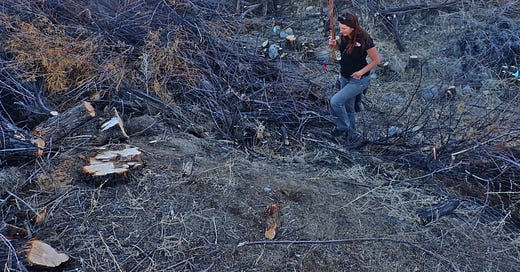



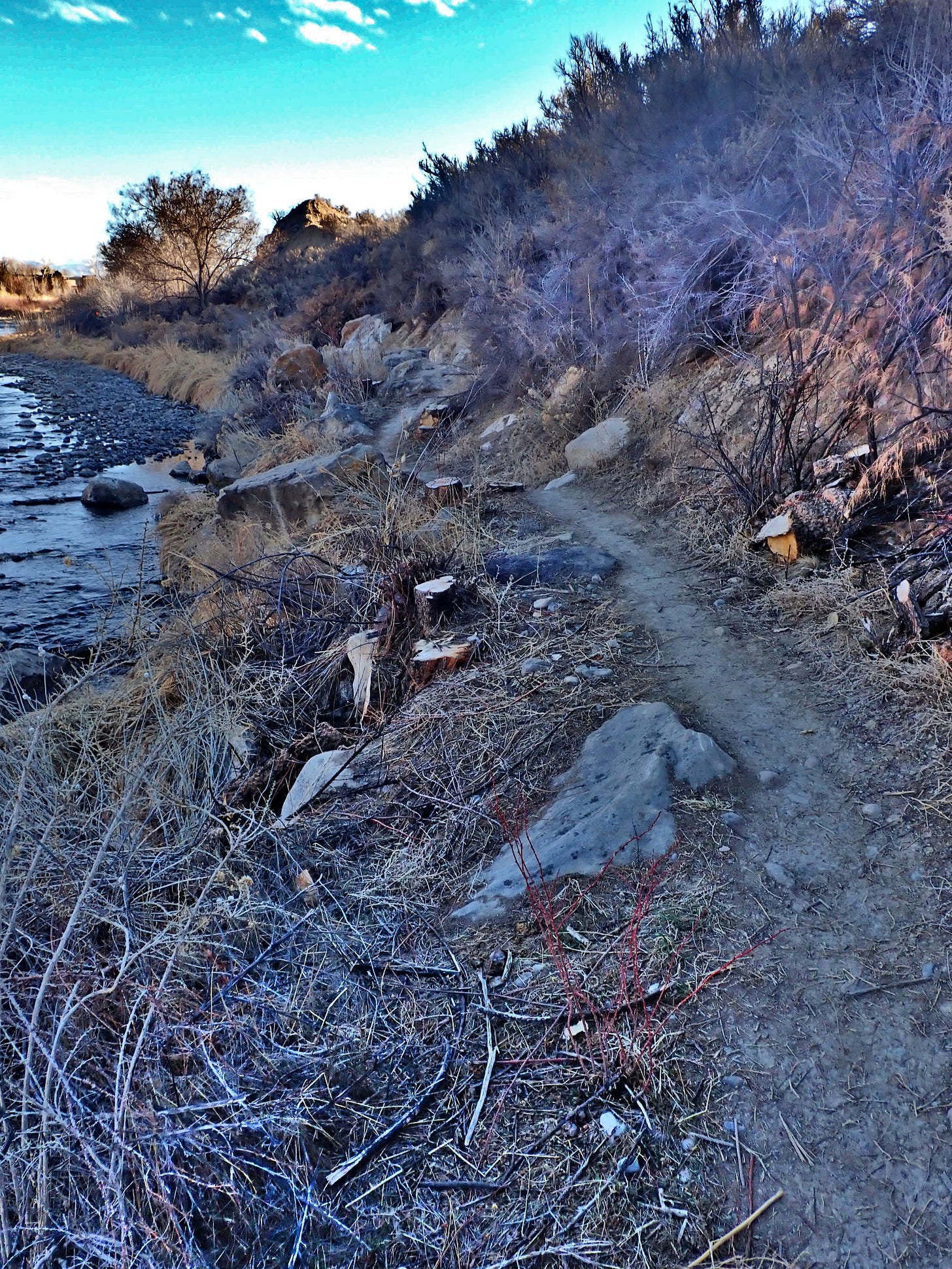
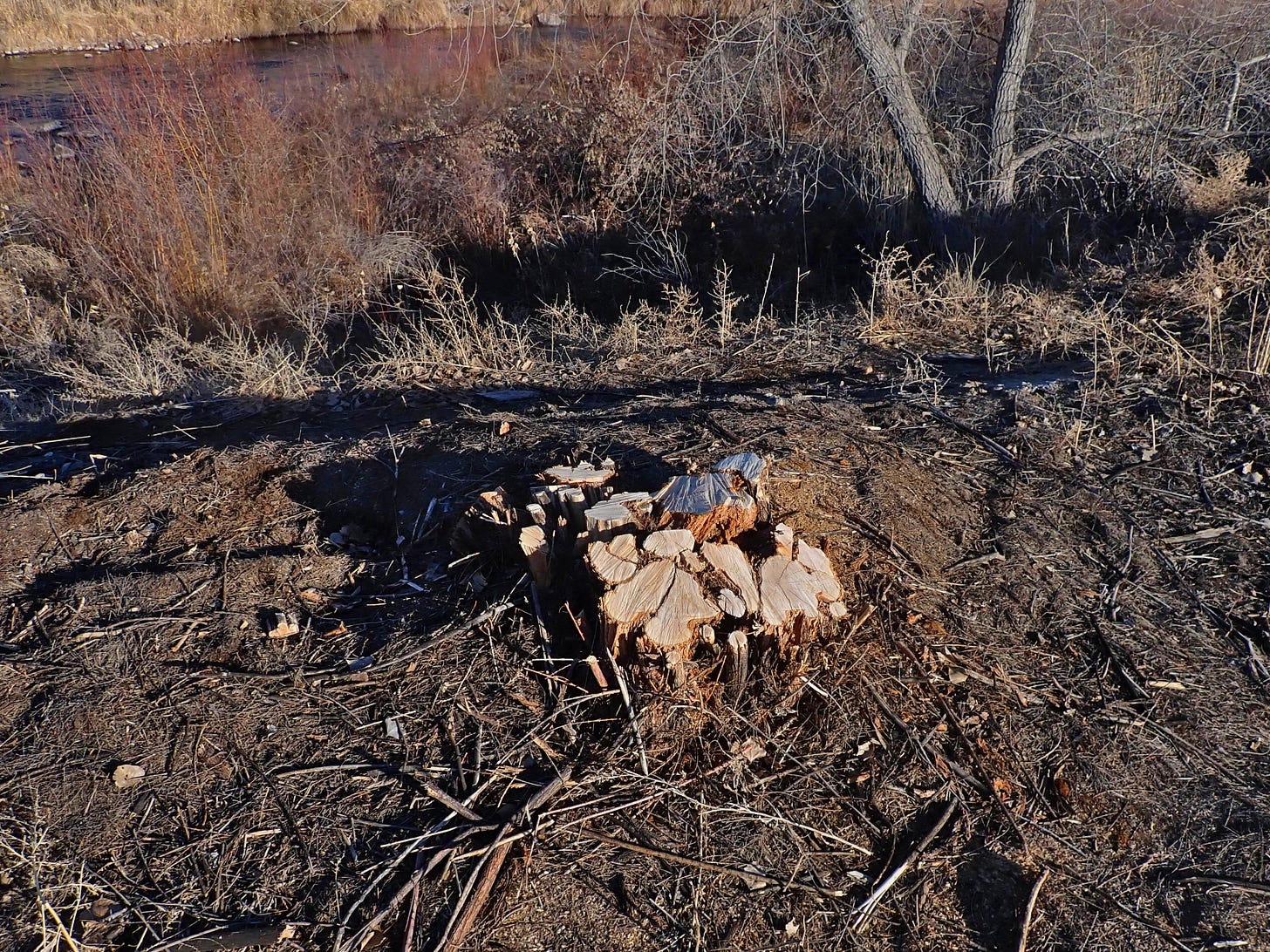
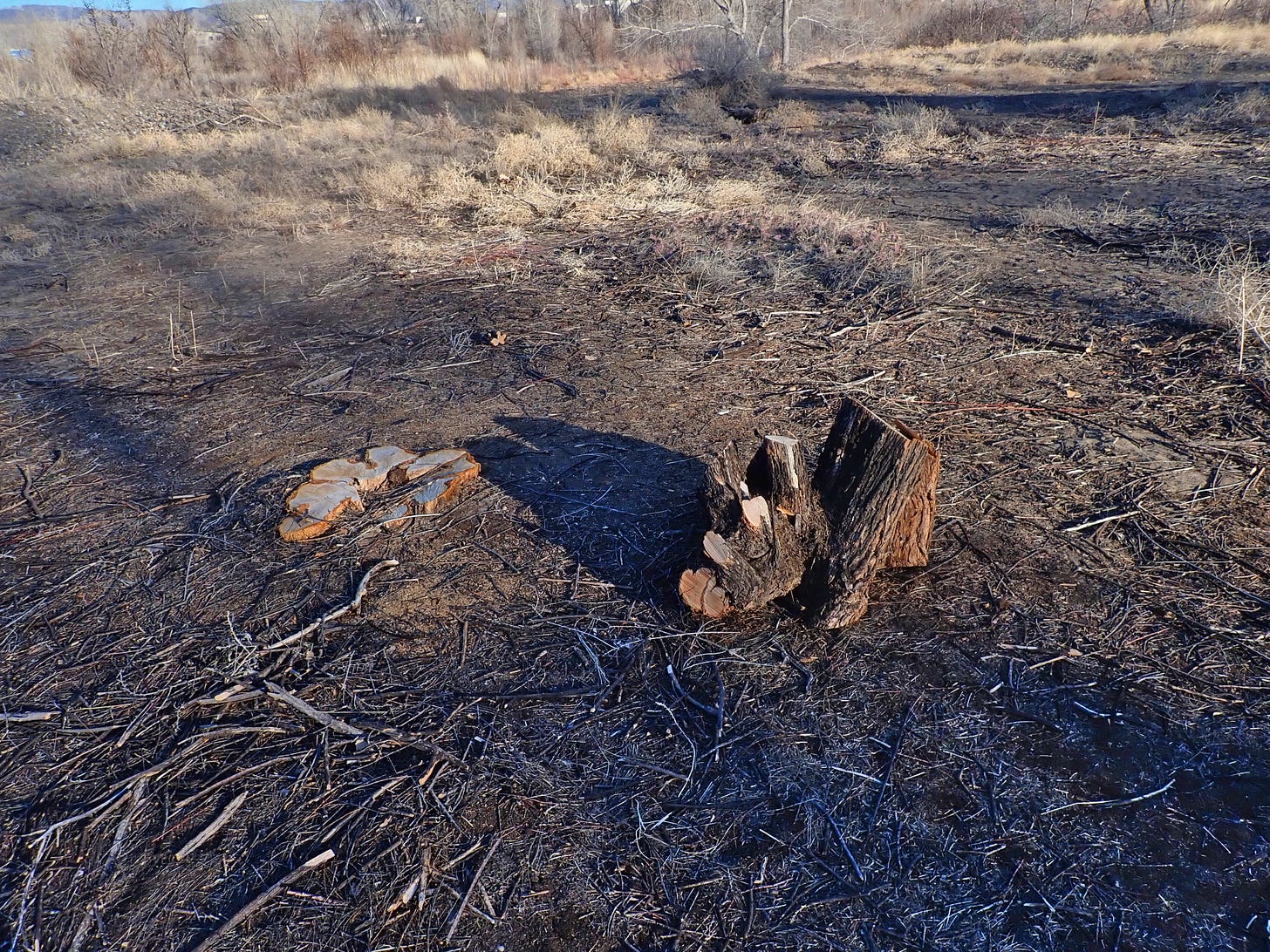
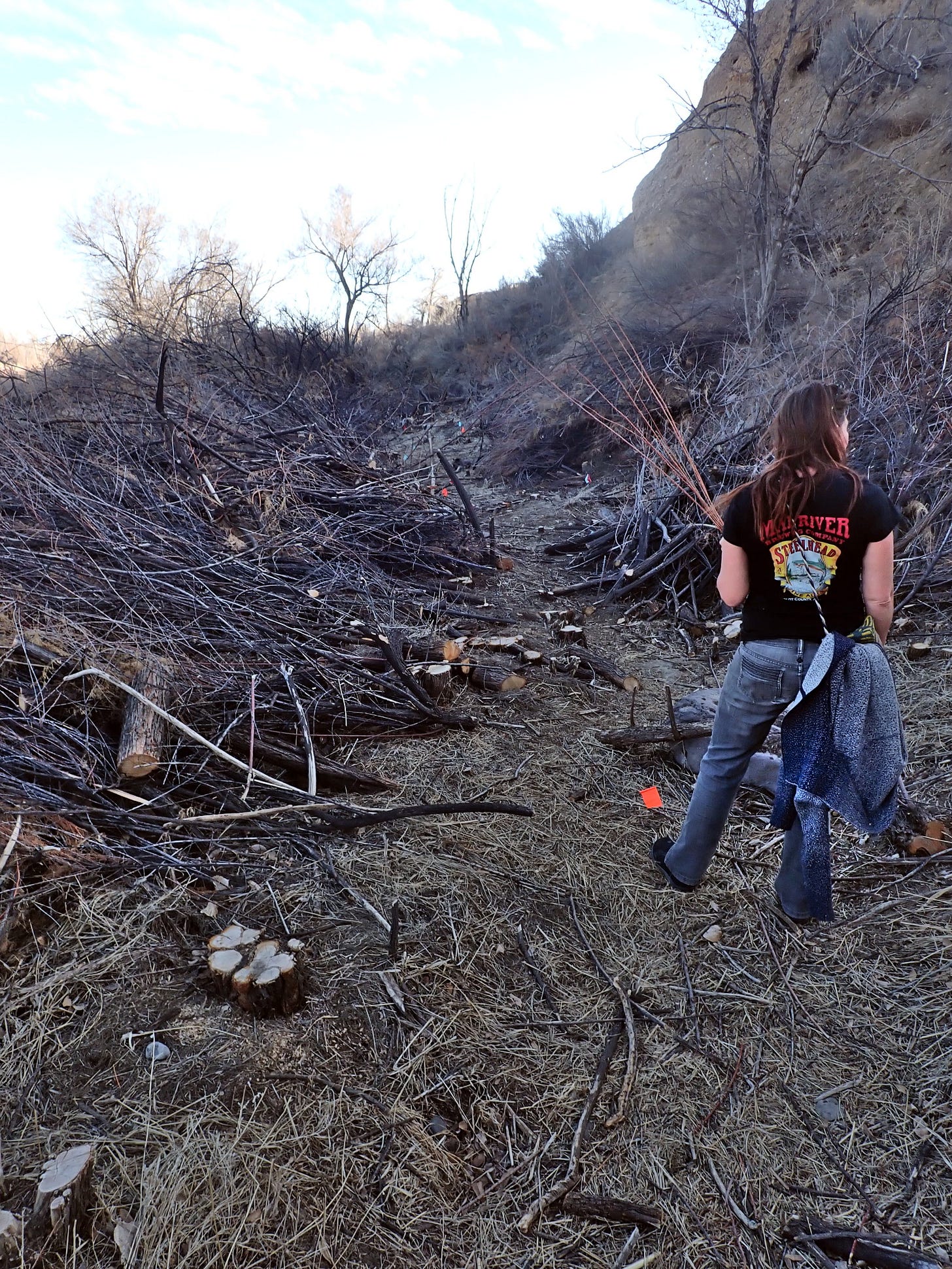
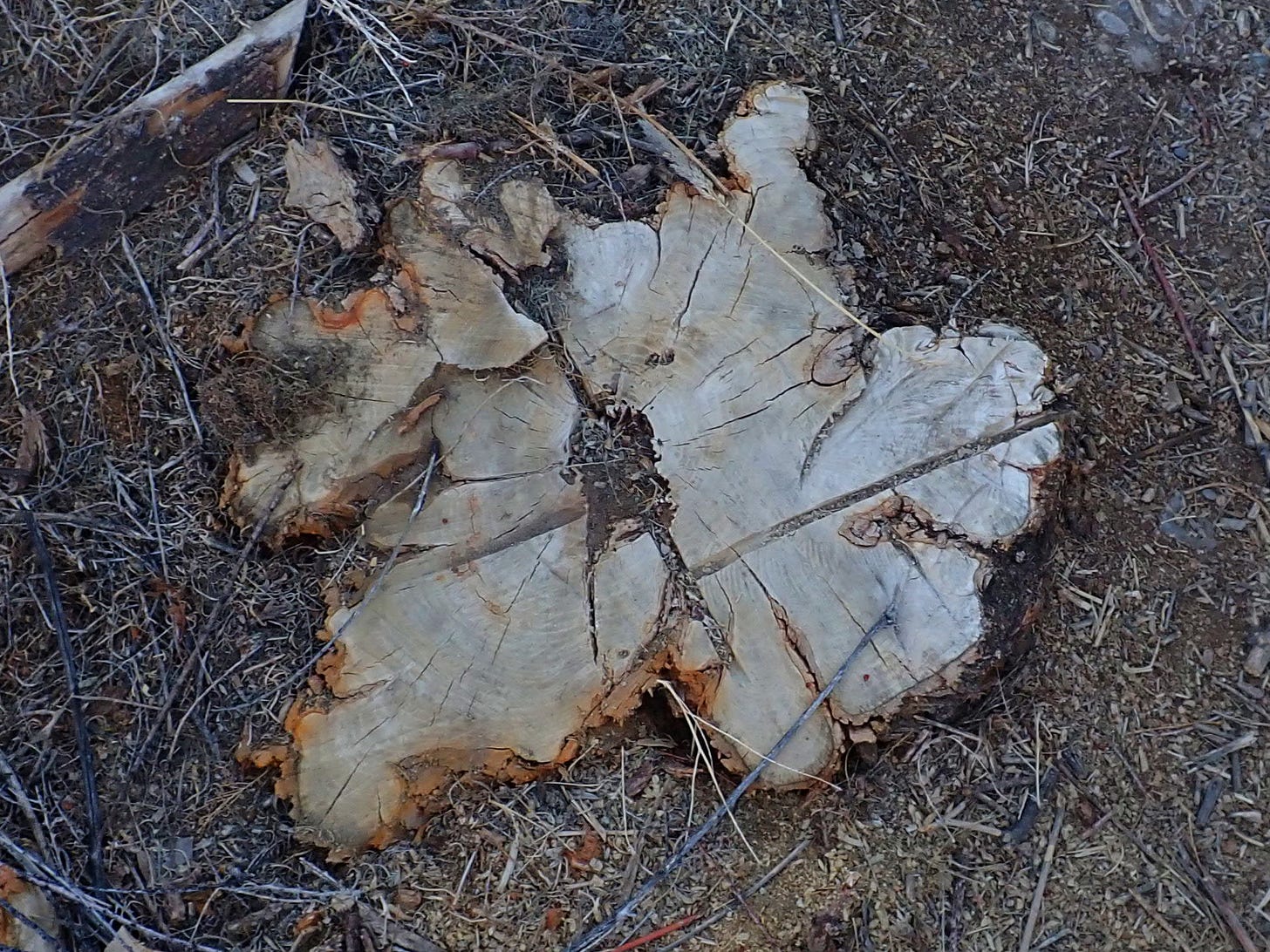
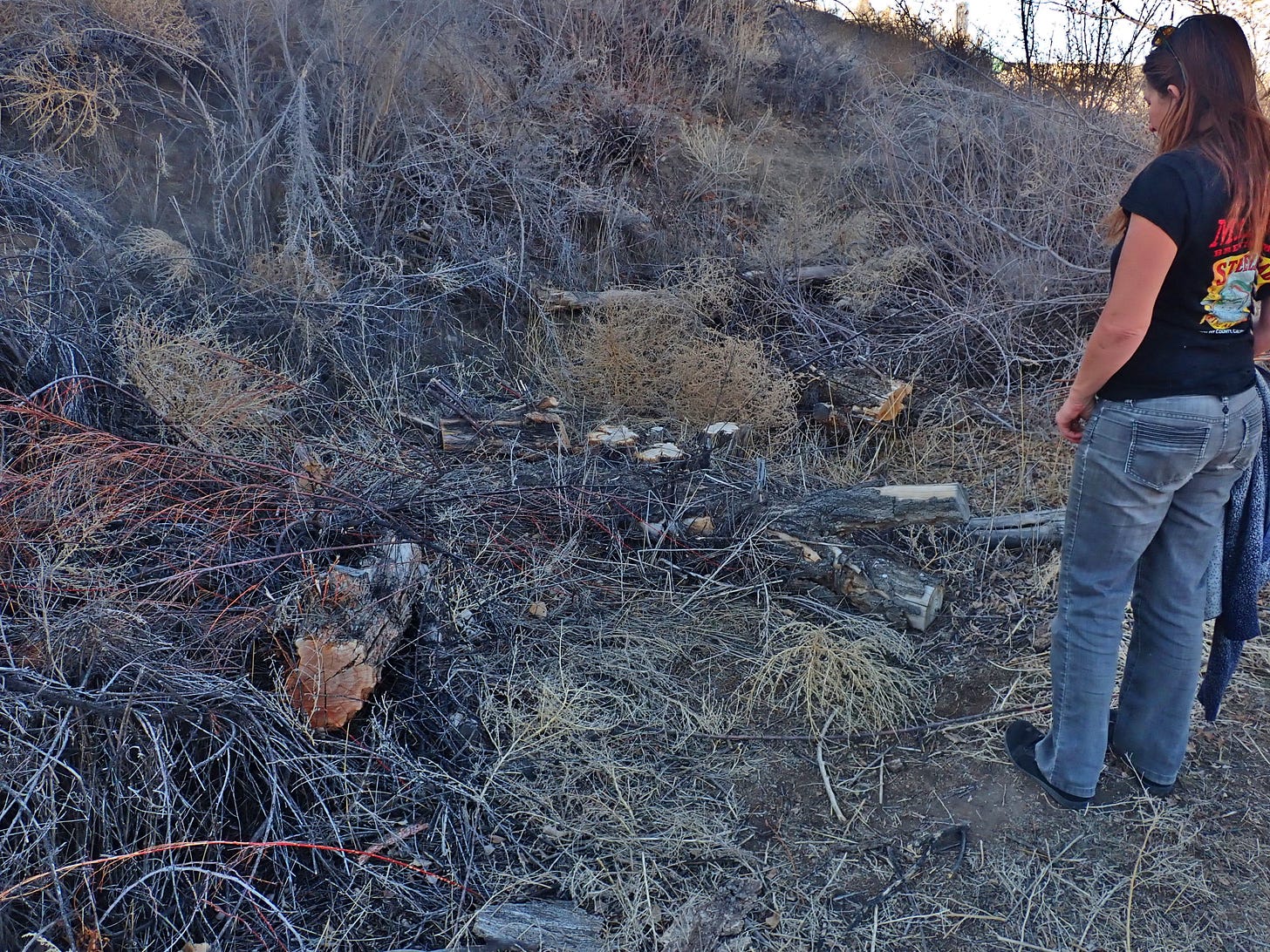
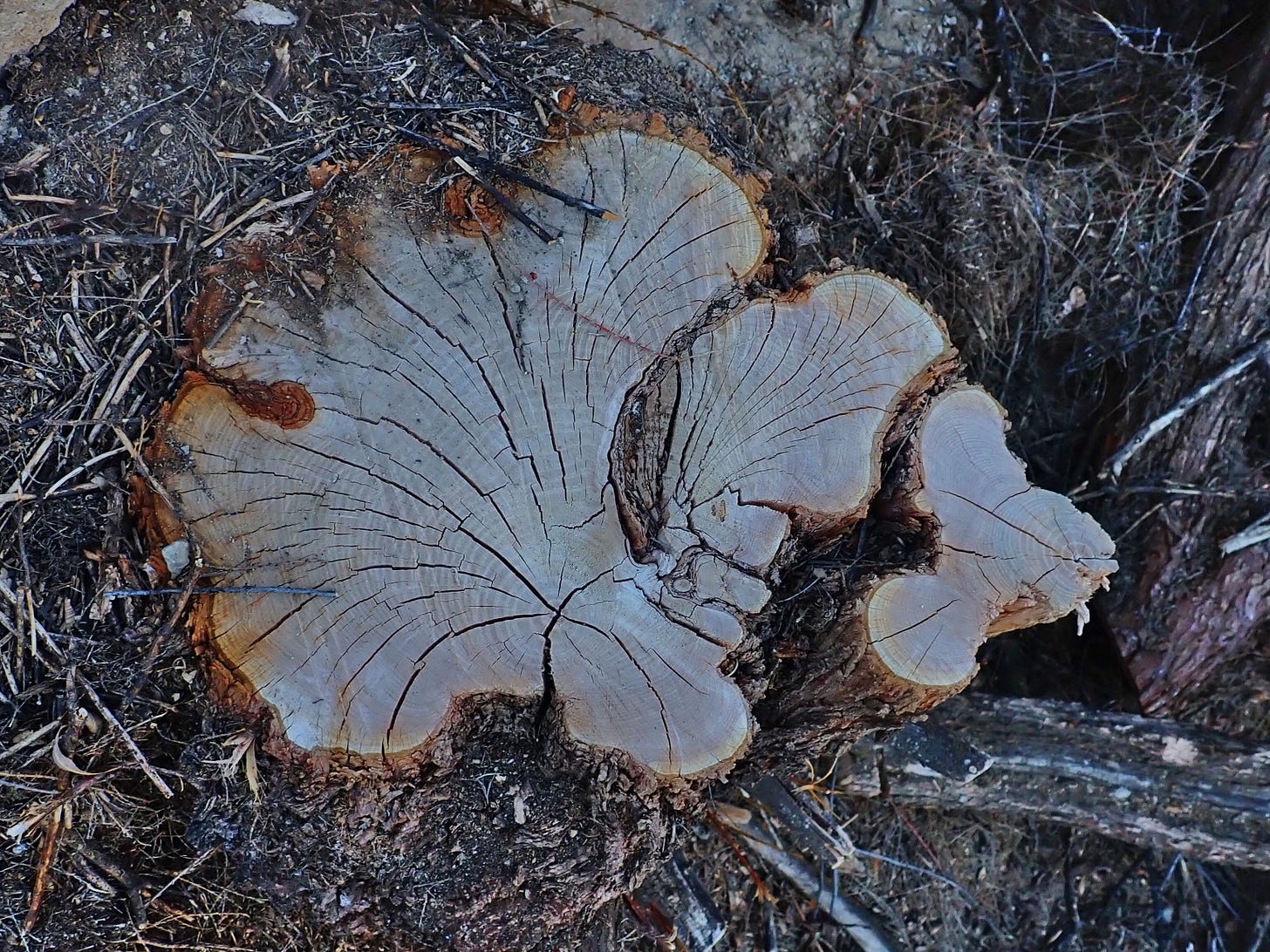
I forgot to add that almost all the people who self-righteously and arrogantly talk about the many lives of plants and animals who should be killed for not being "native," are not native themselves, but are usually descended from European invaders to the Americas. That reminder can help reach those who care. I love how you and Nikki say that the problems attributed to the targeted trees and plants are caused by humans.
Great piece Kollibri. Love and rage.